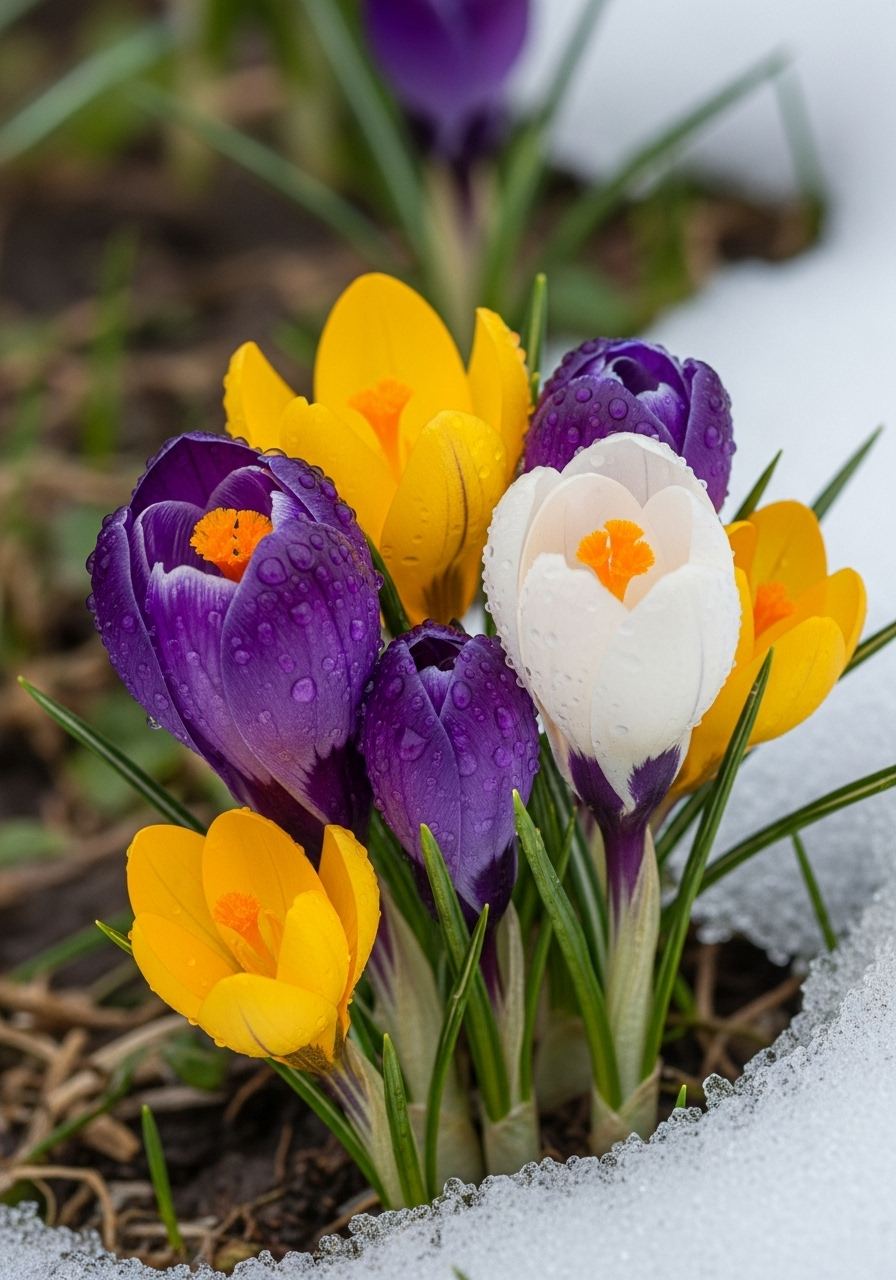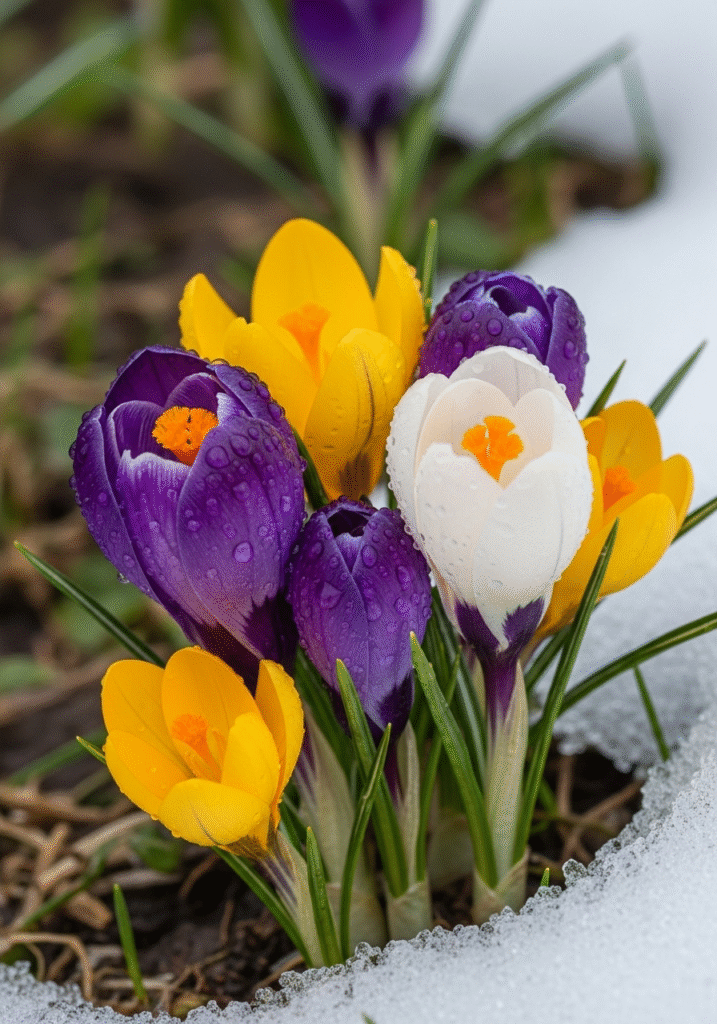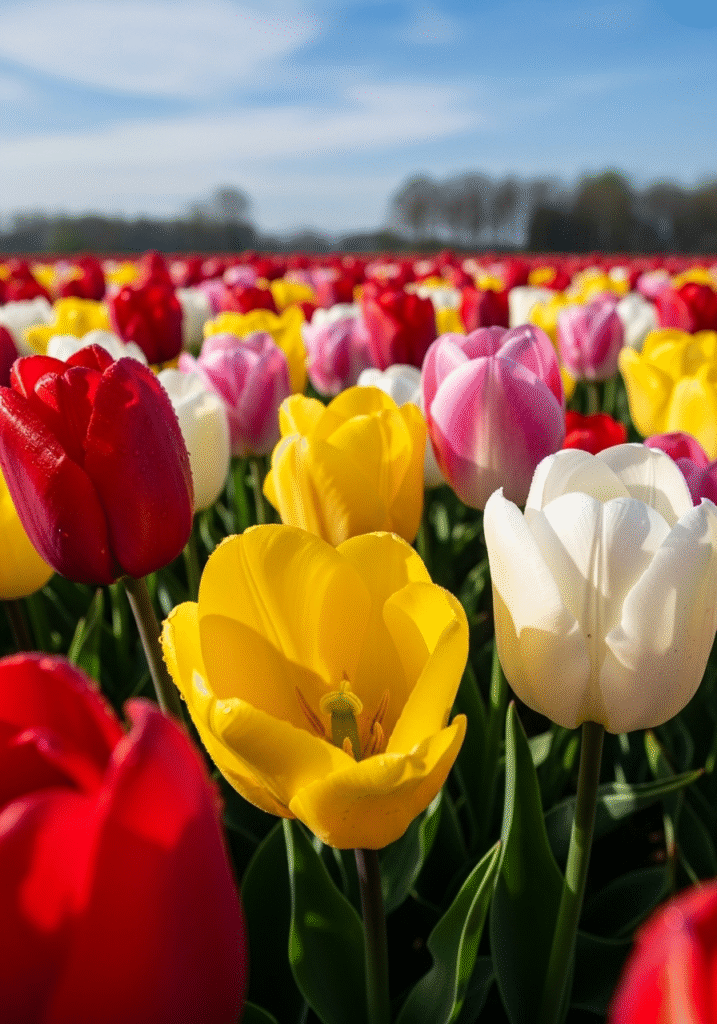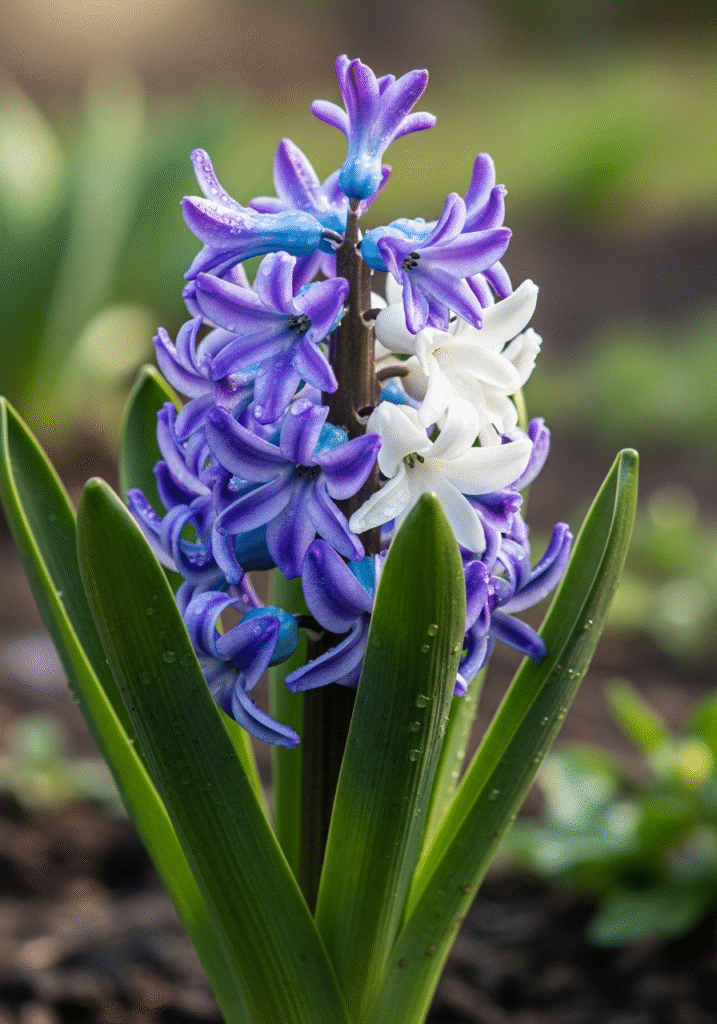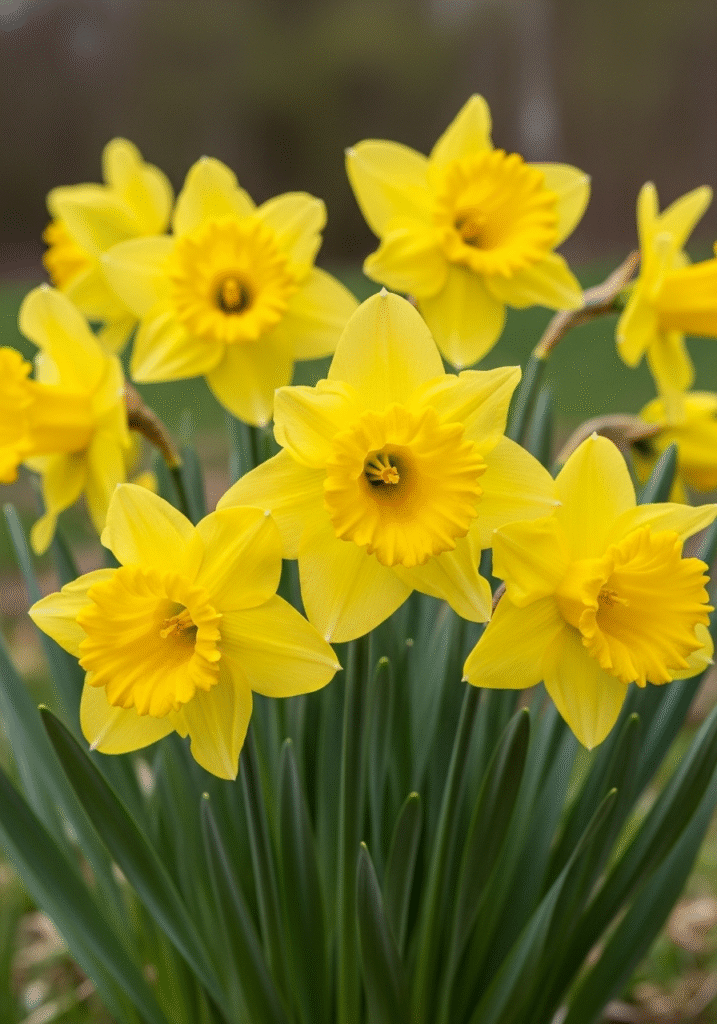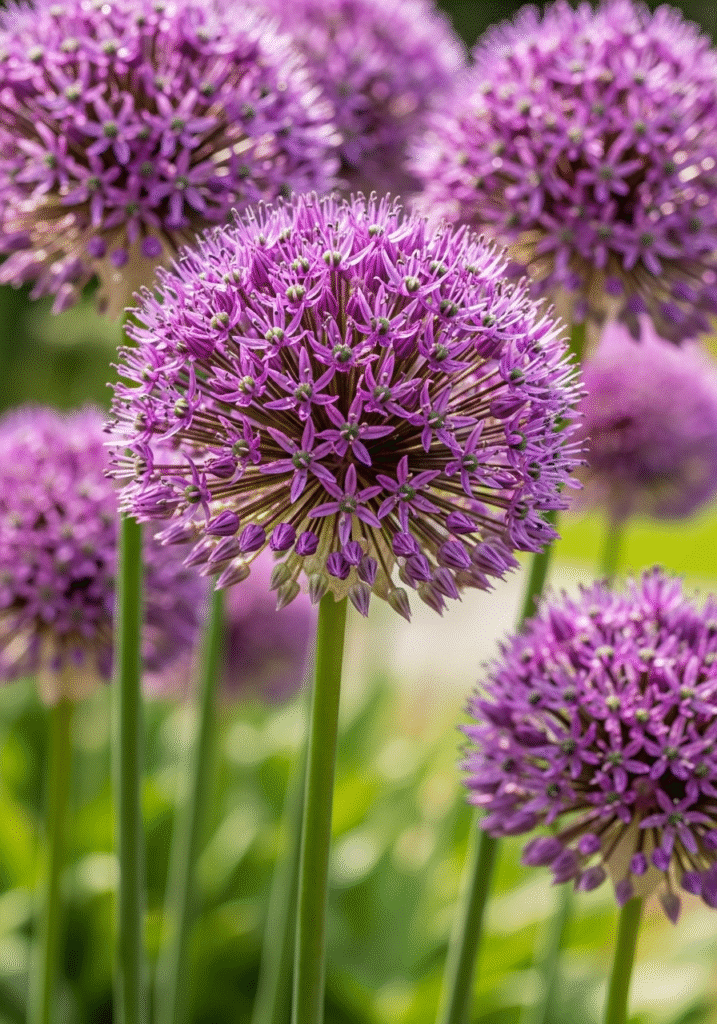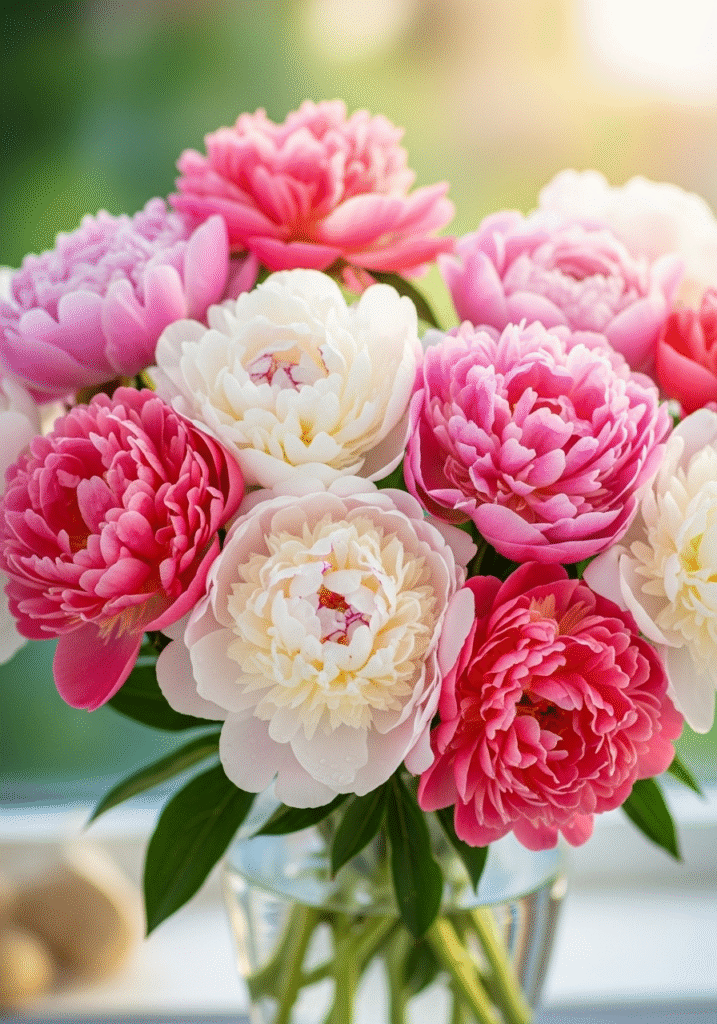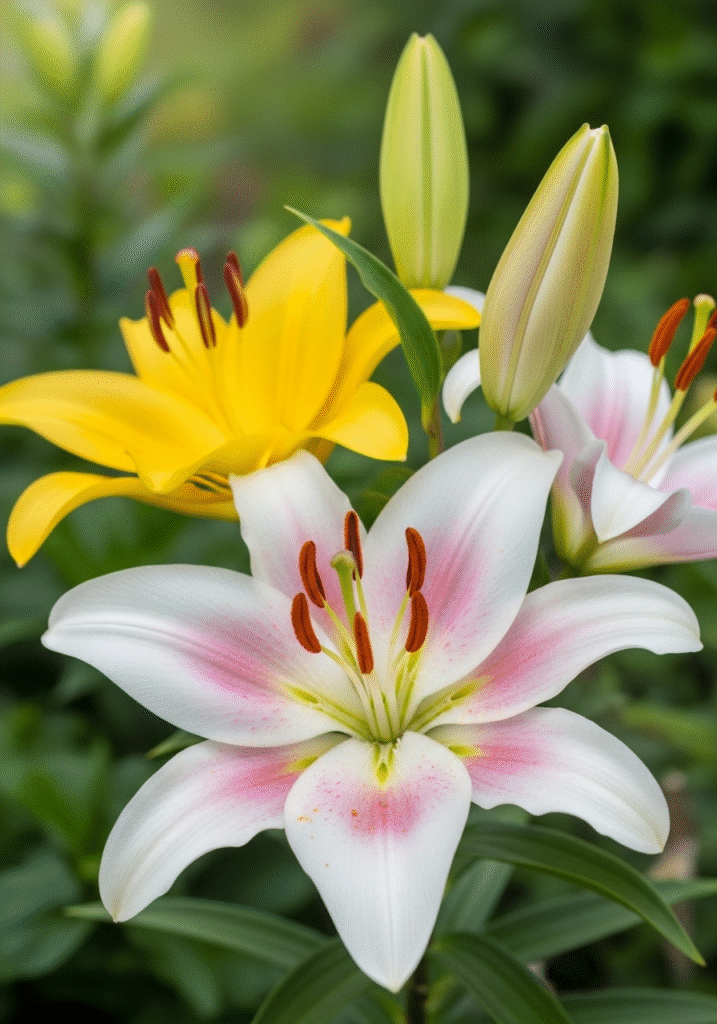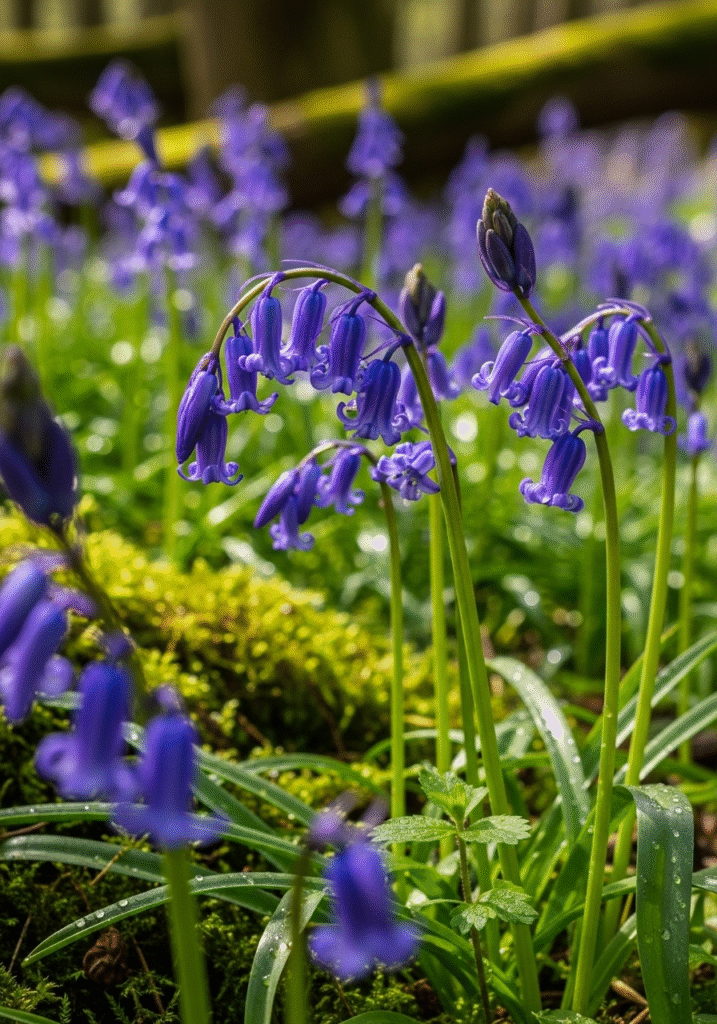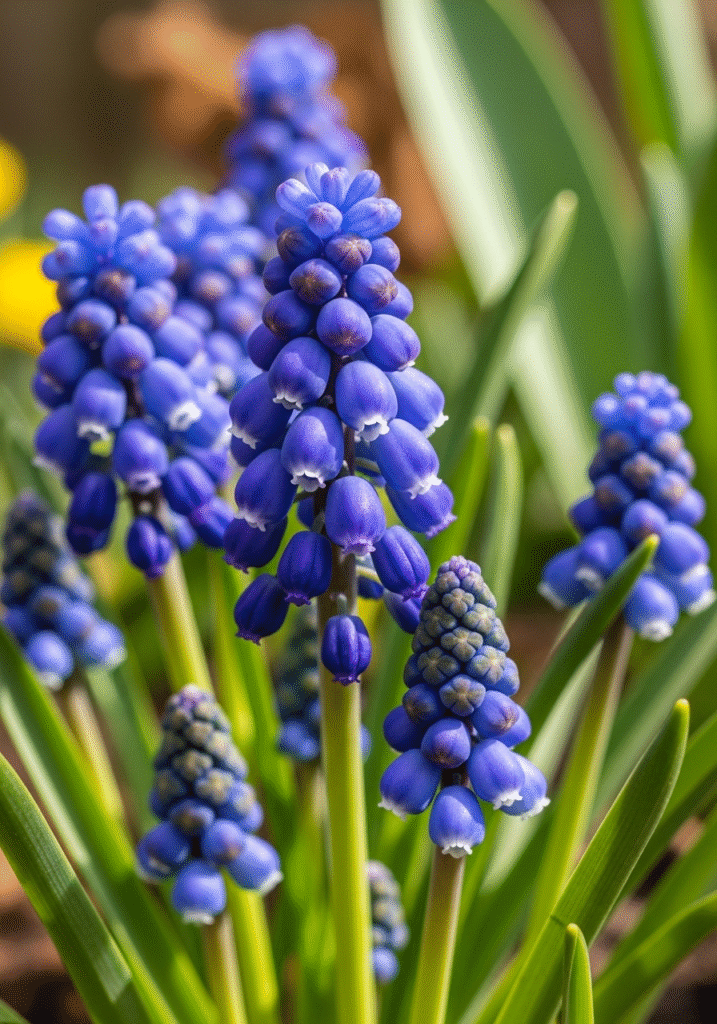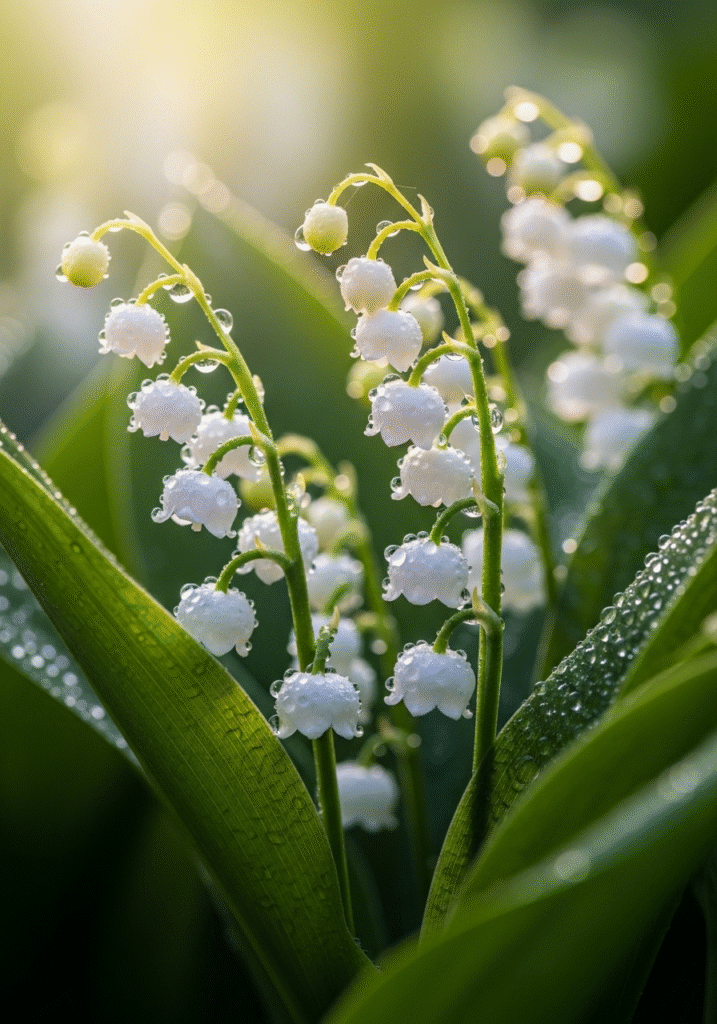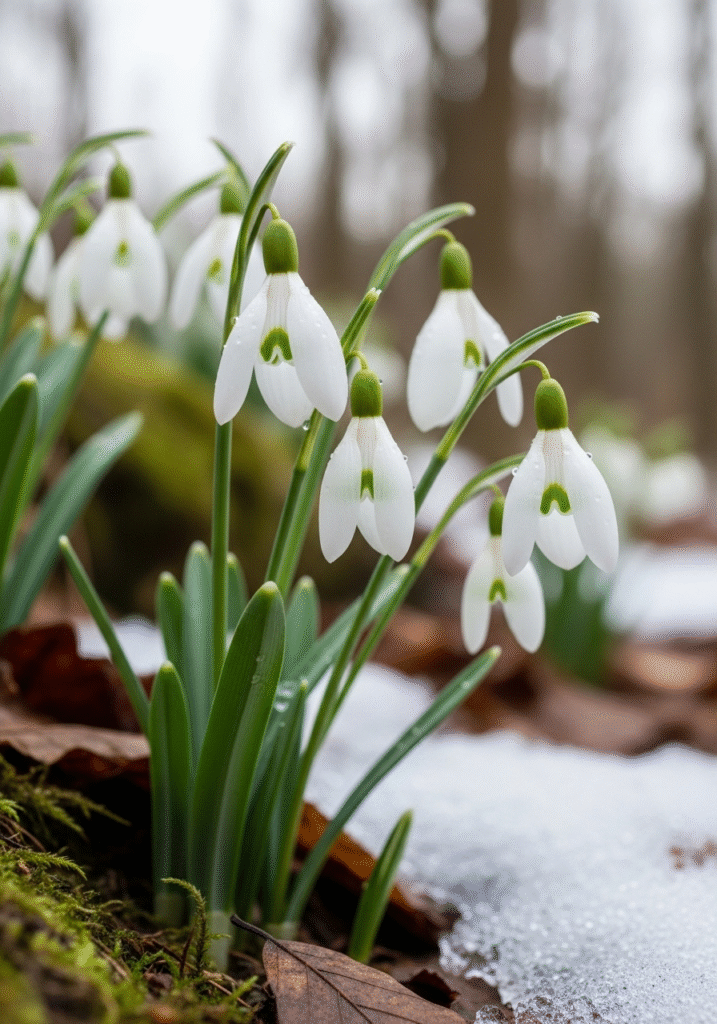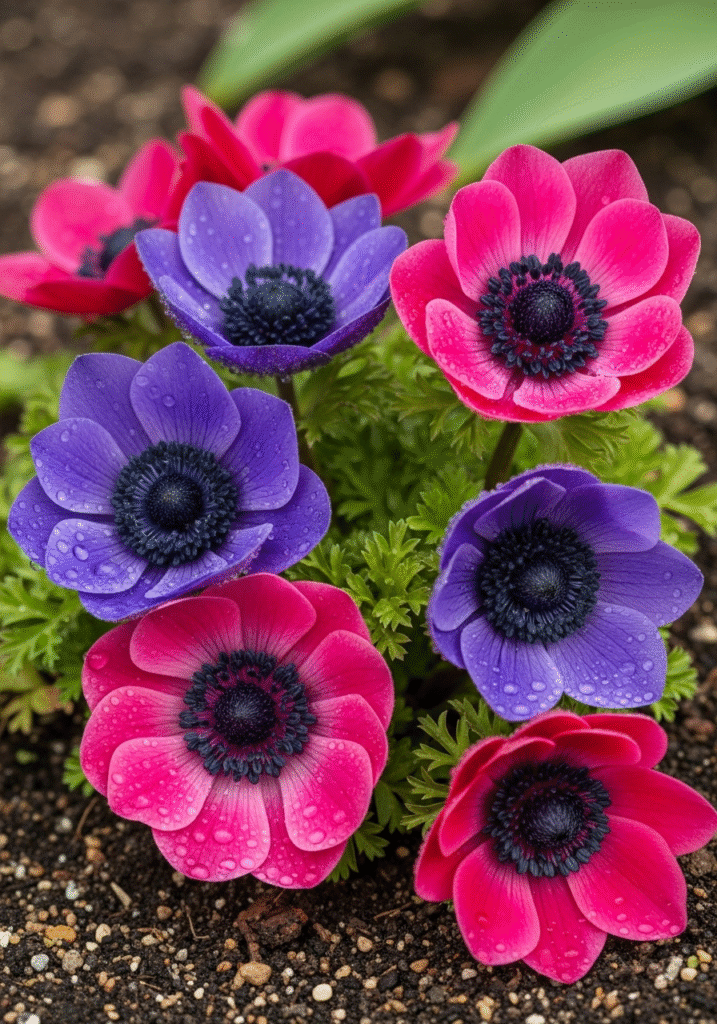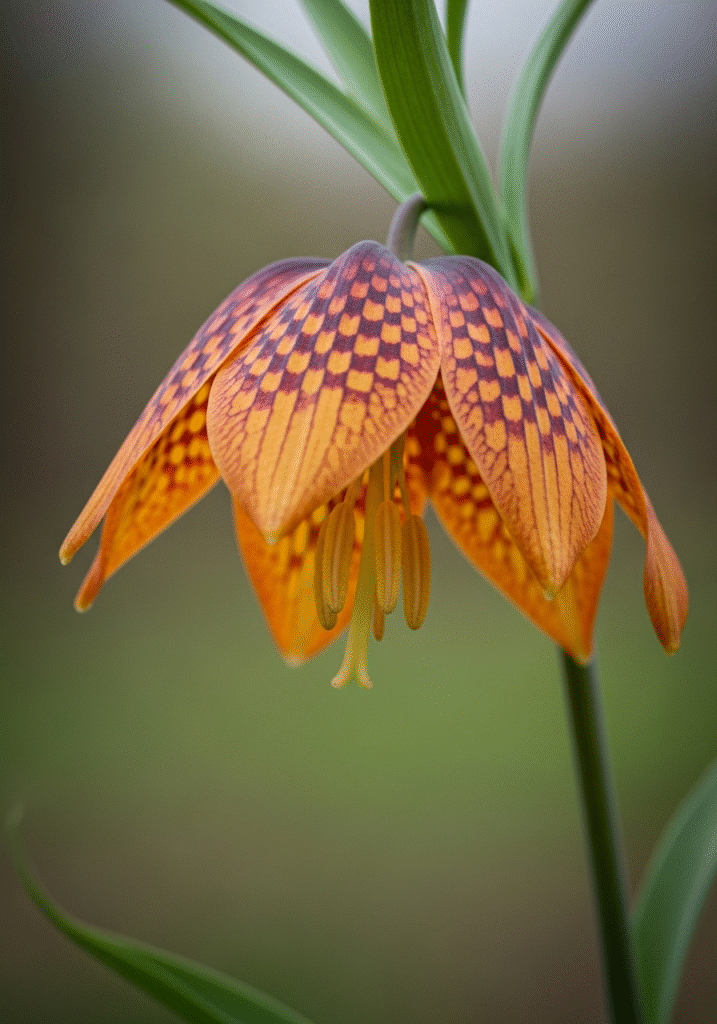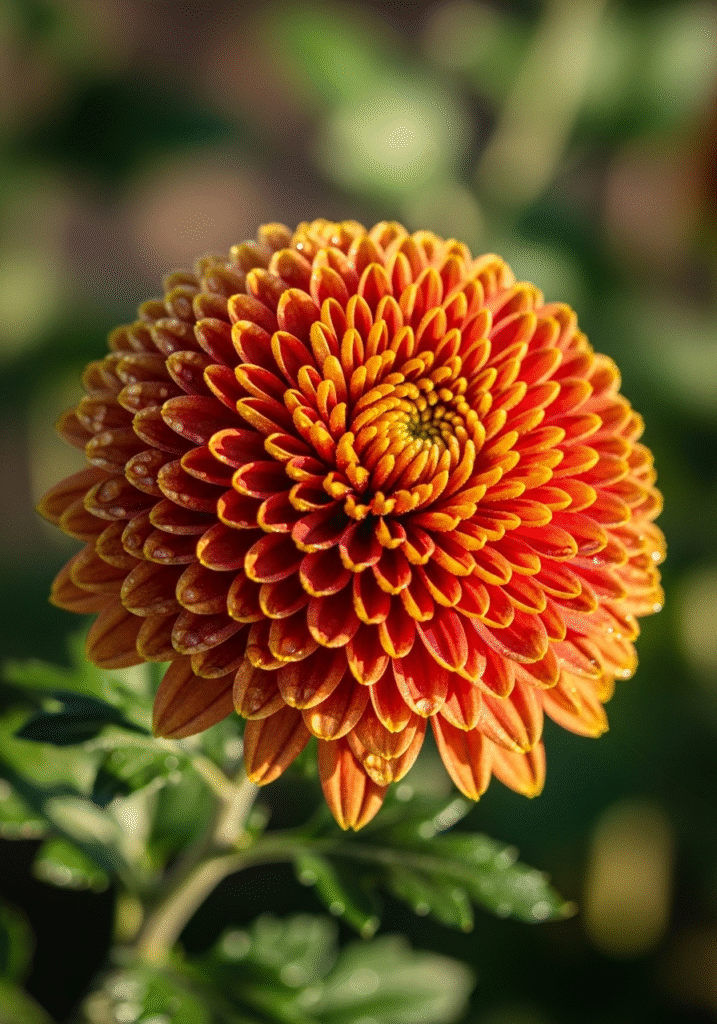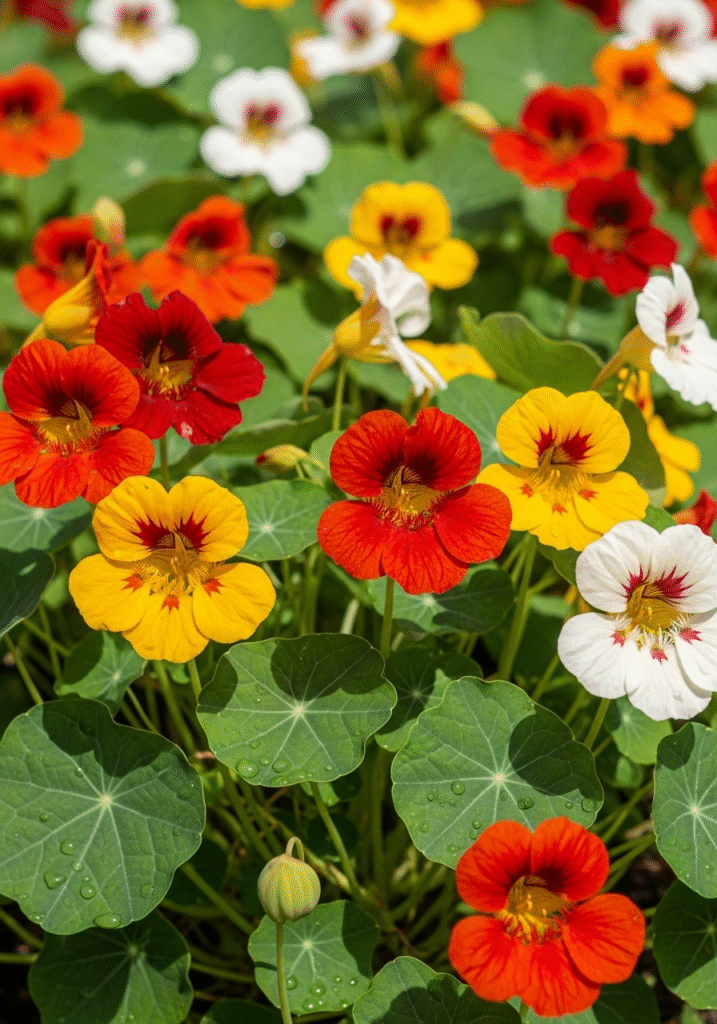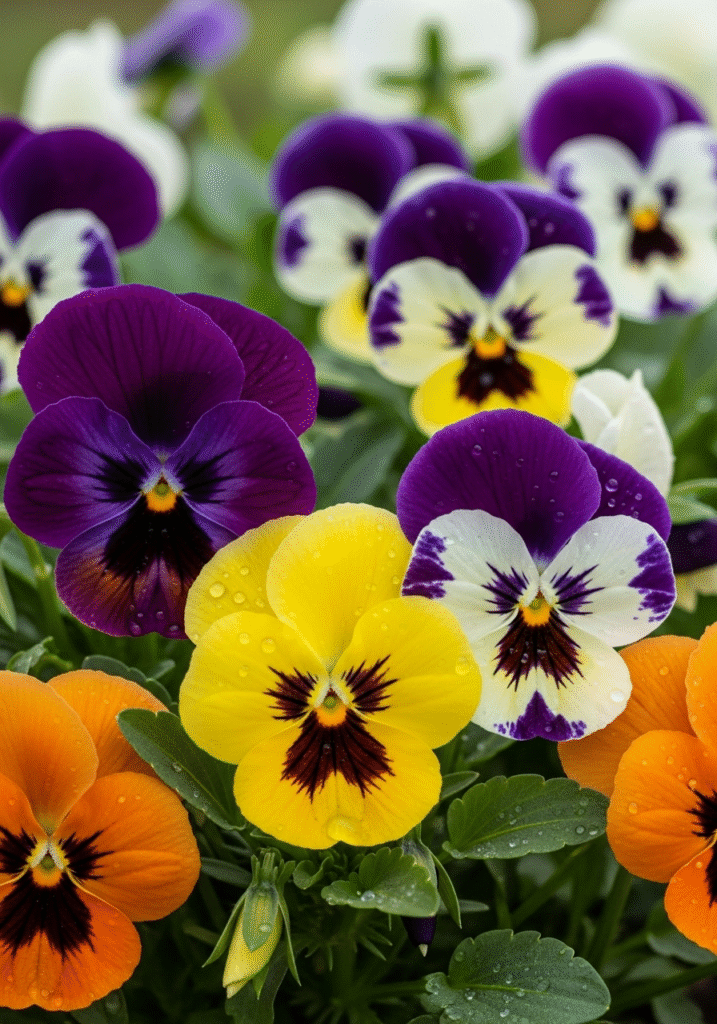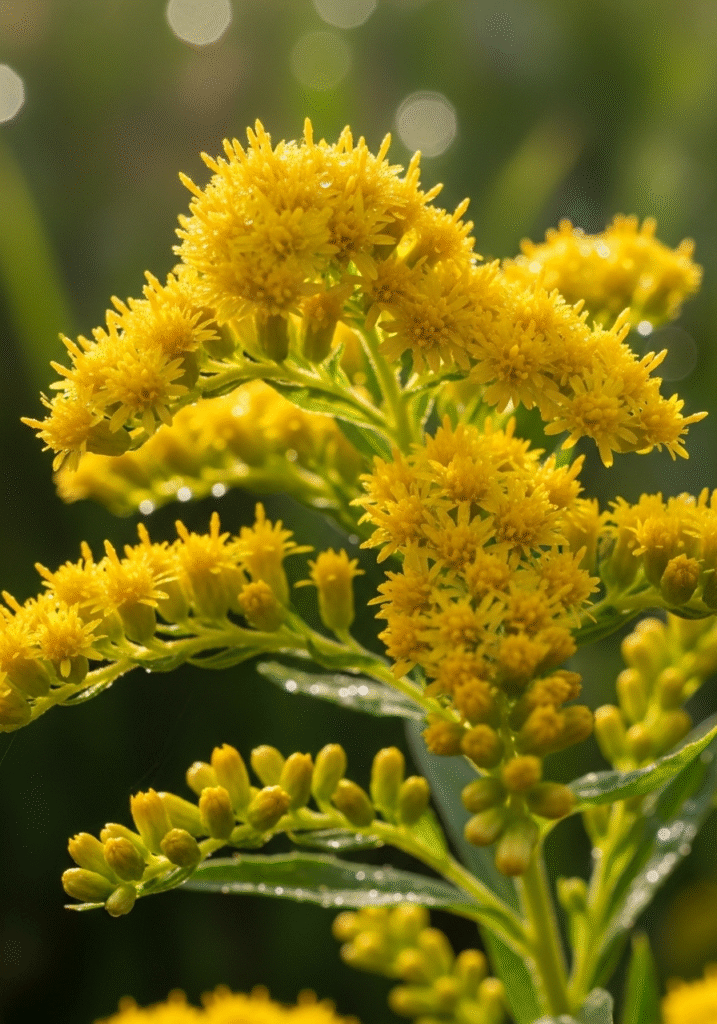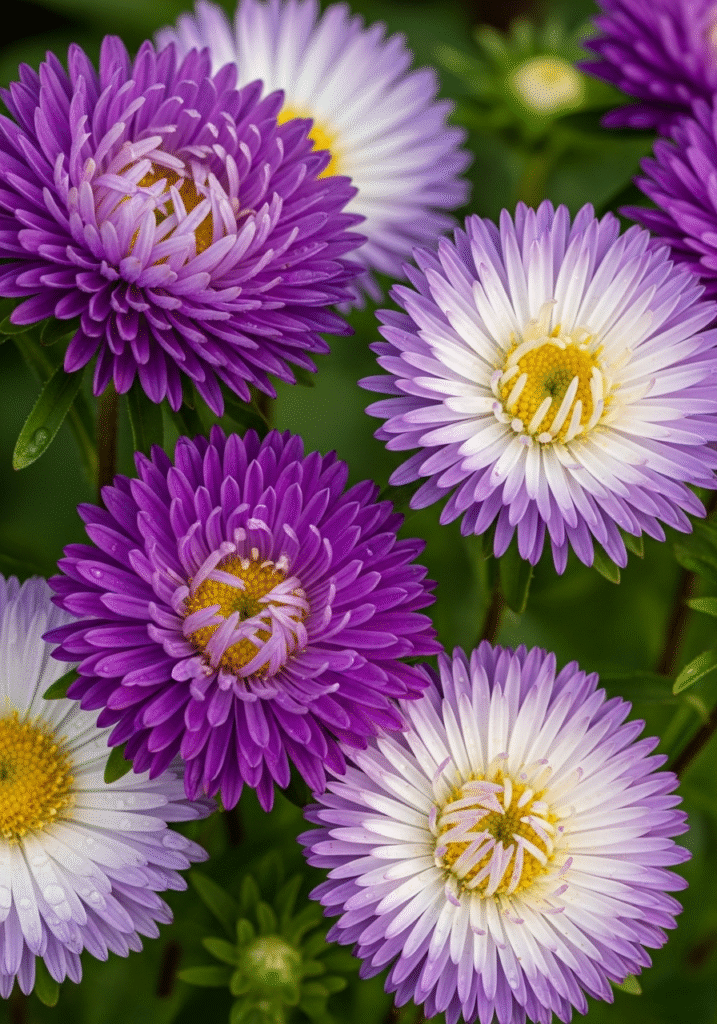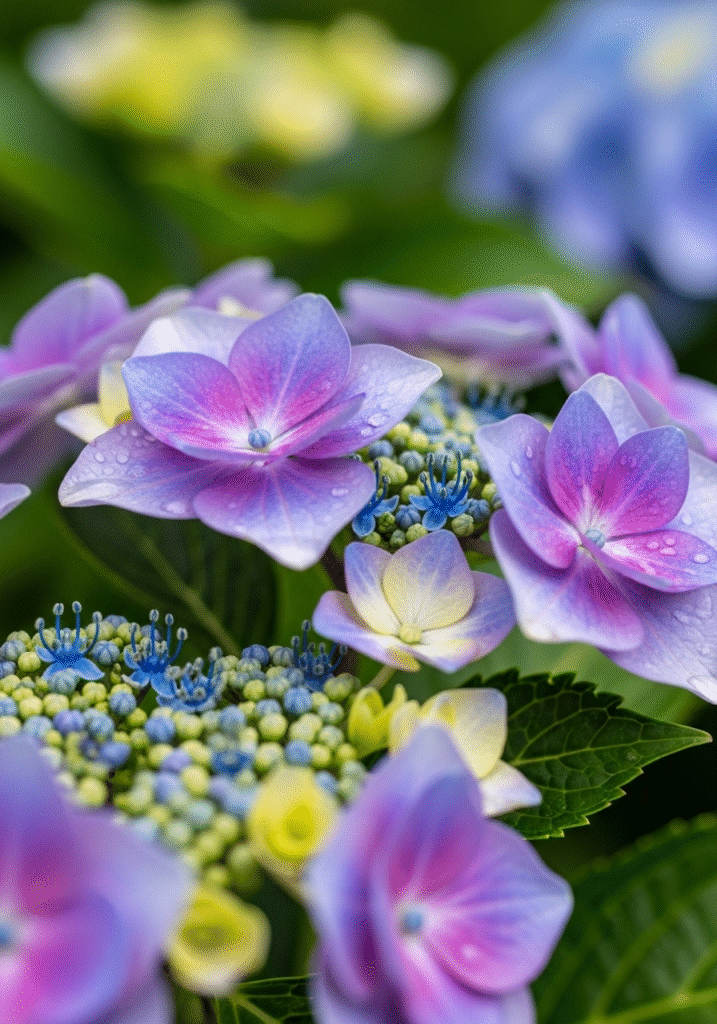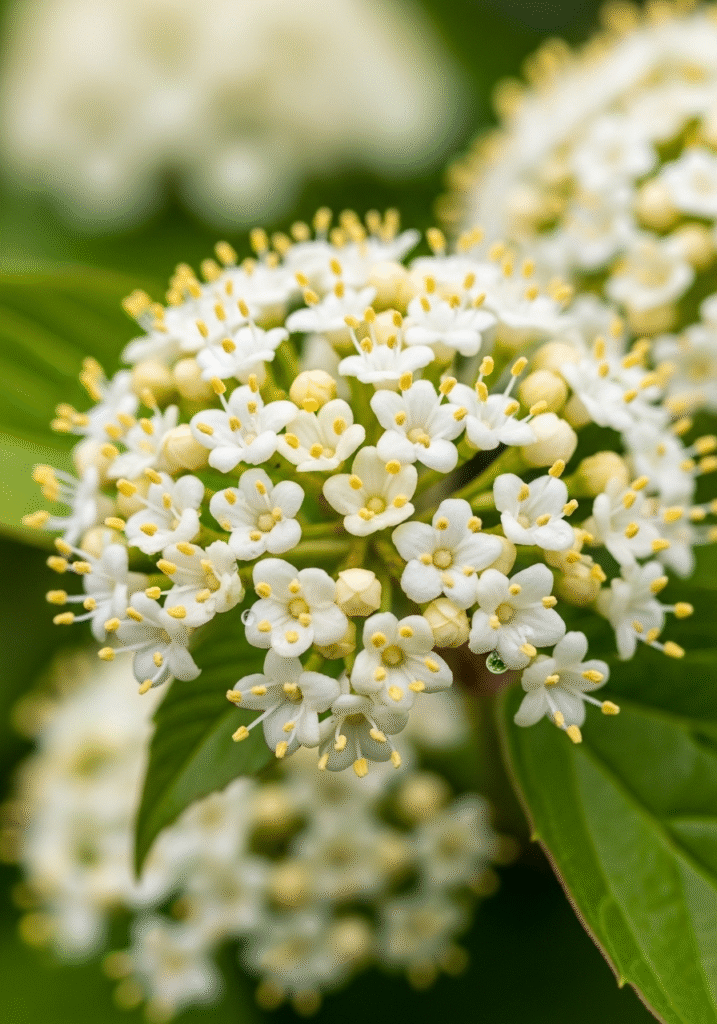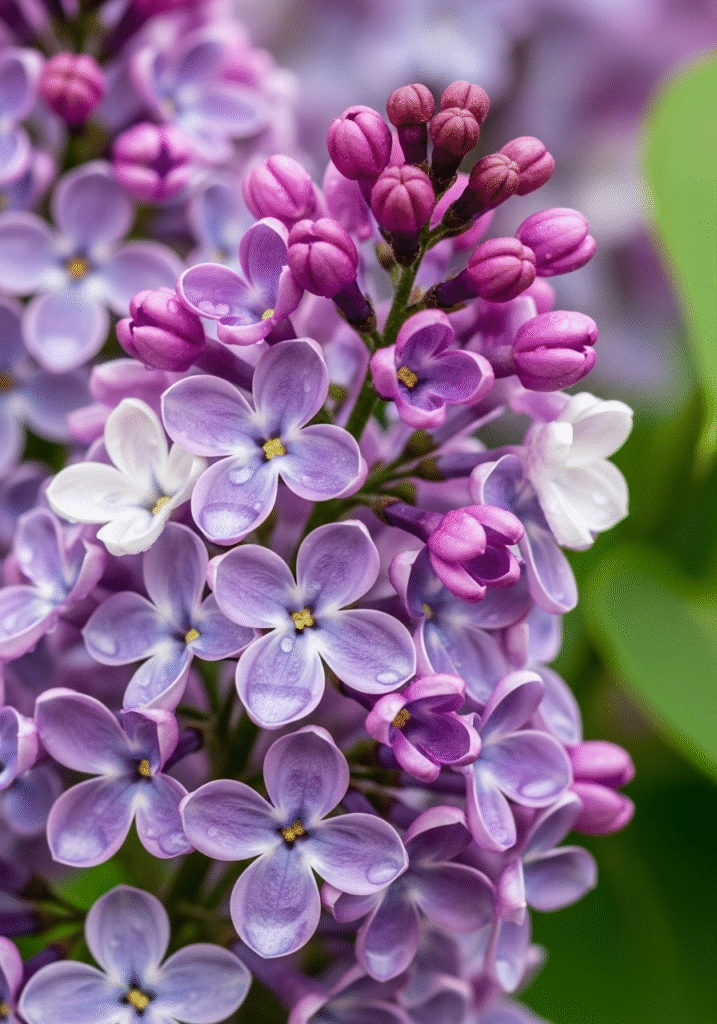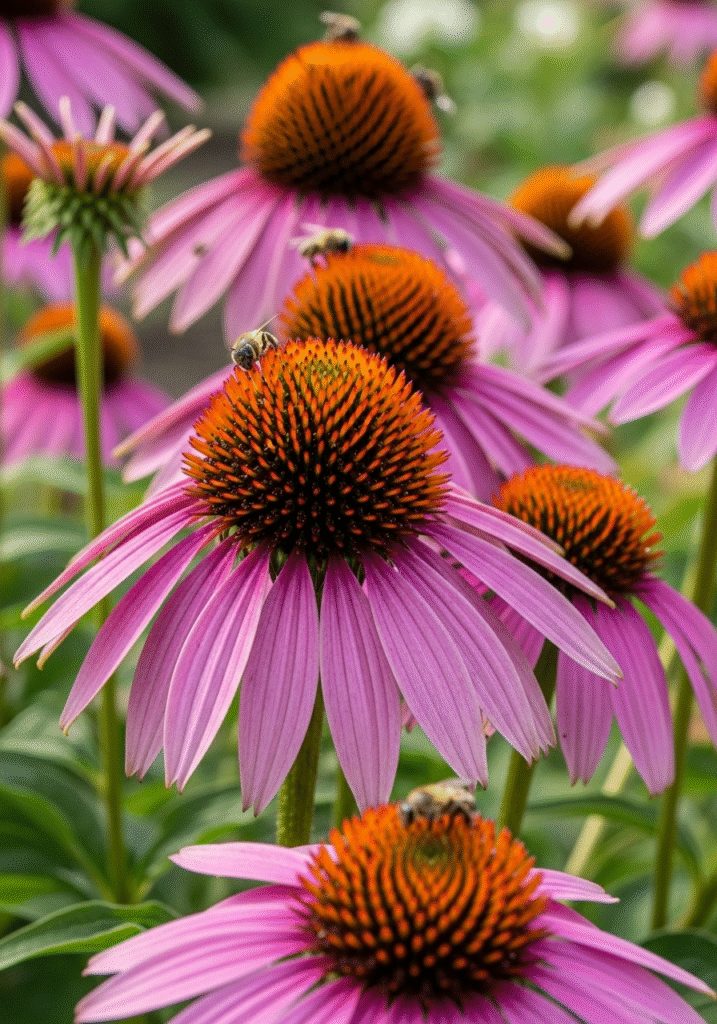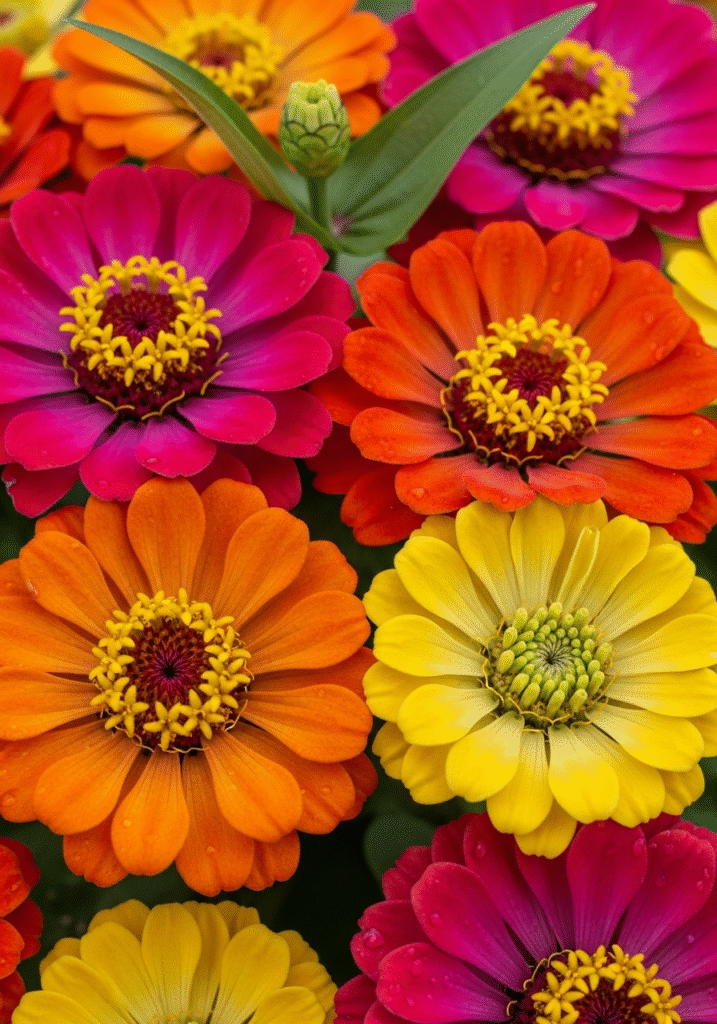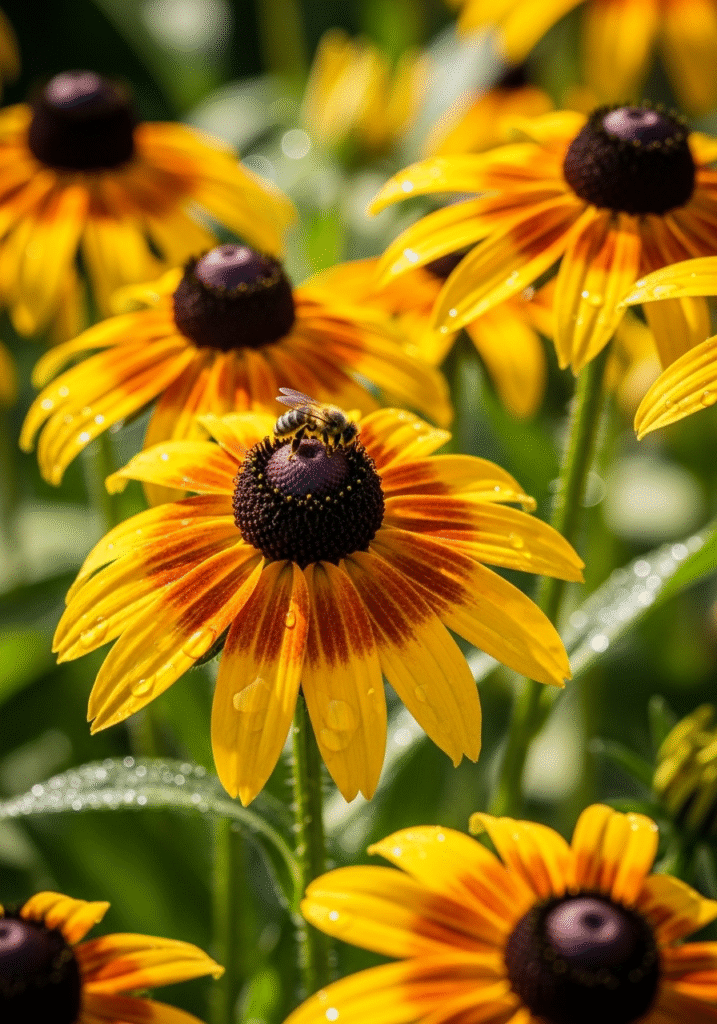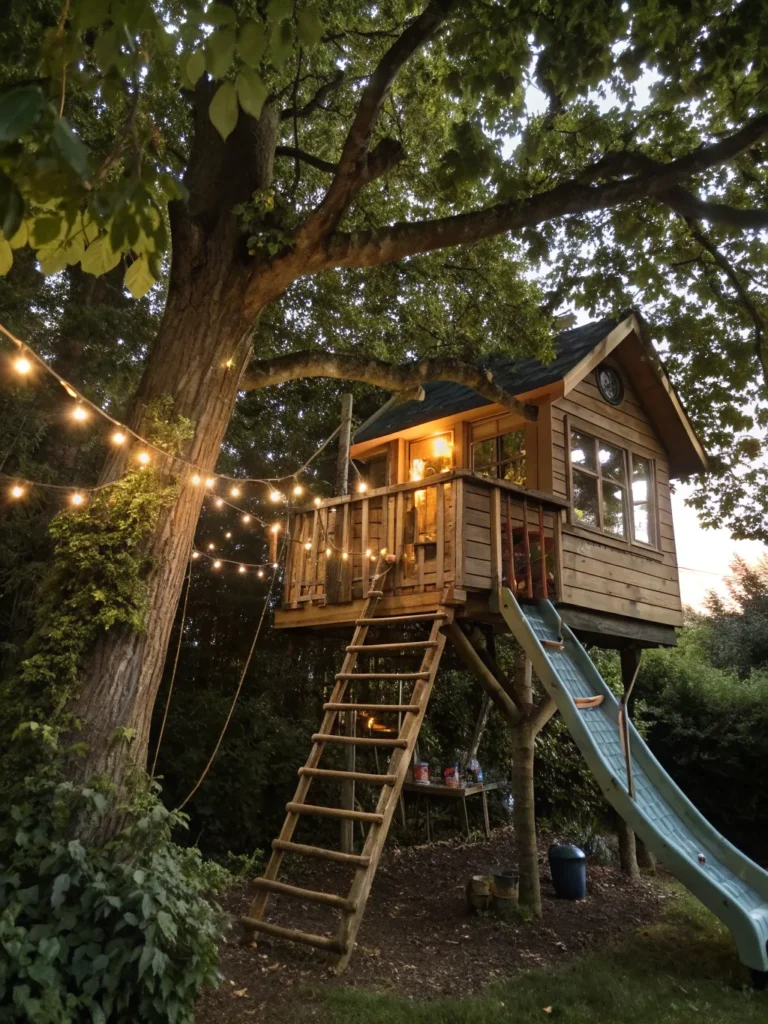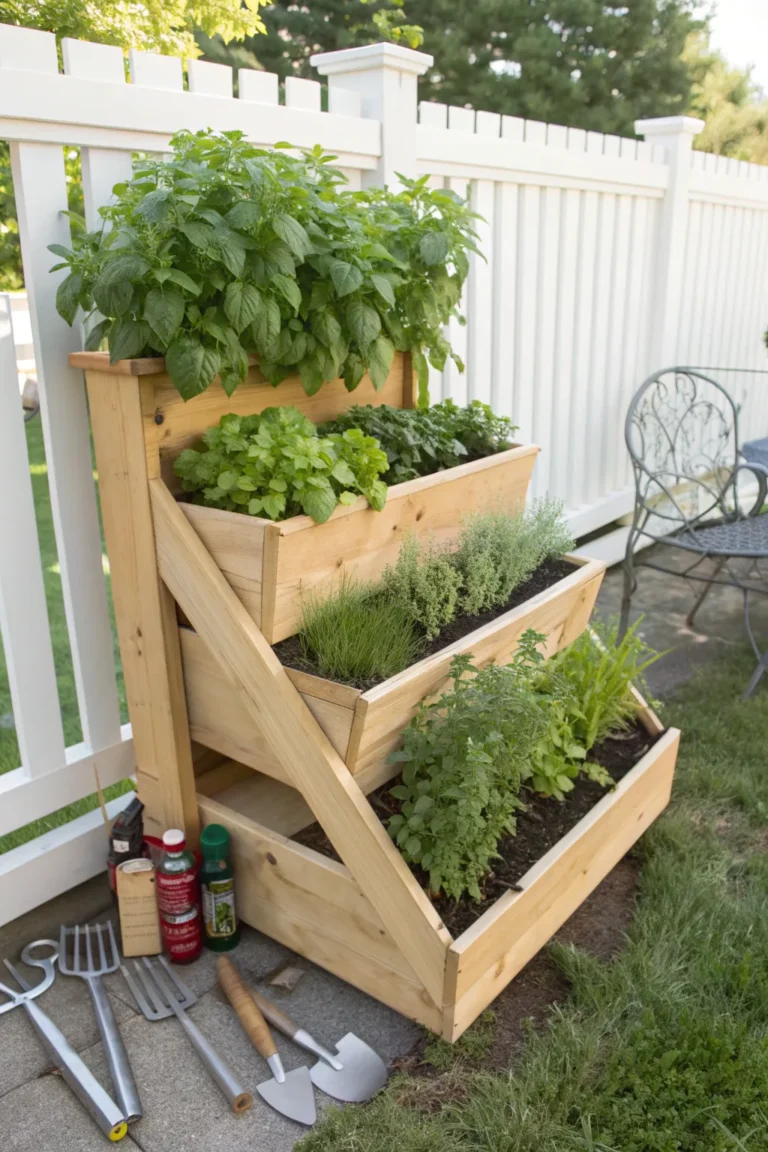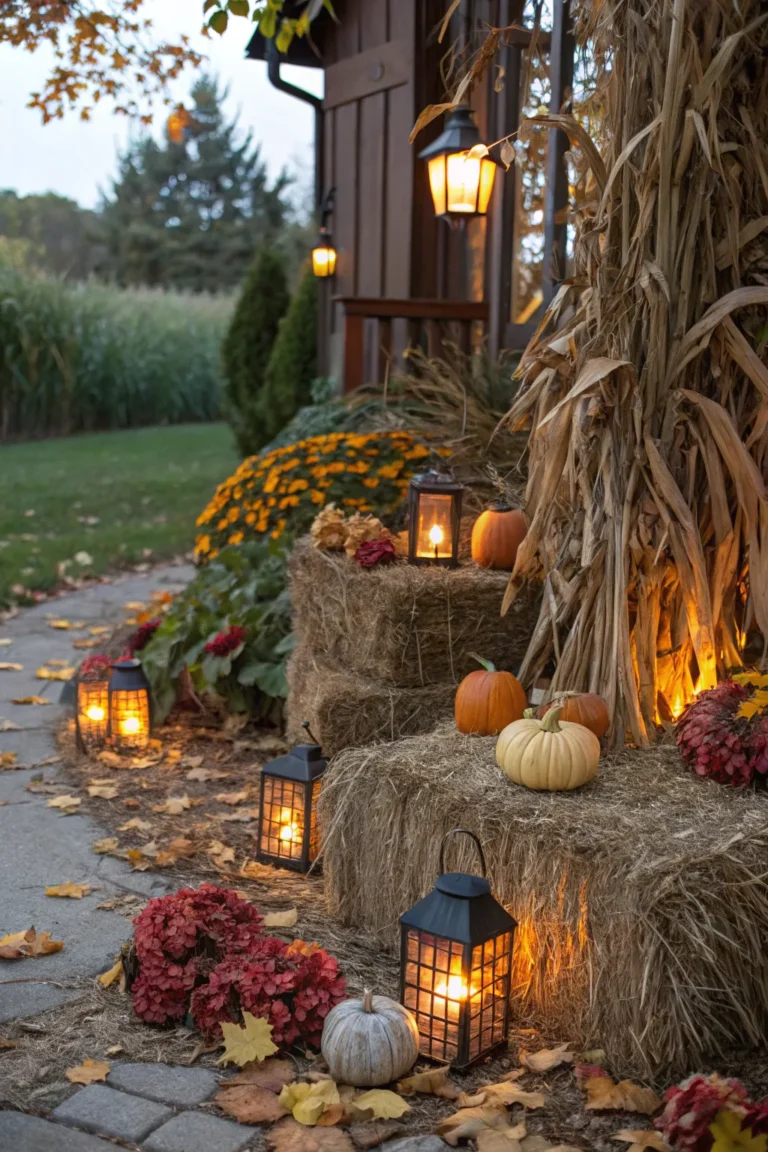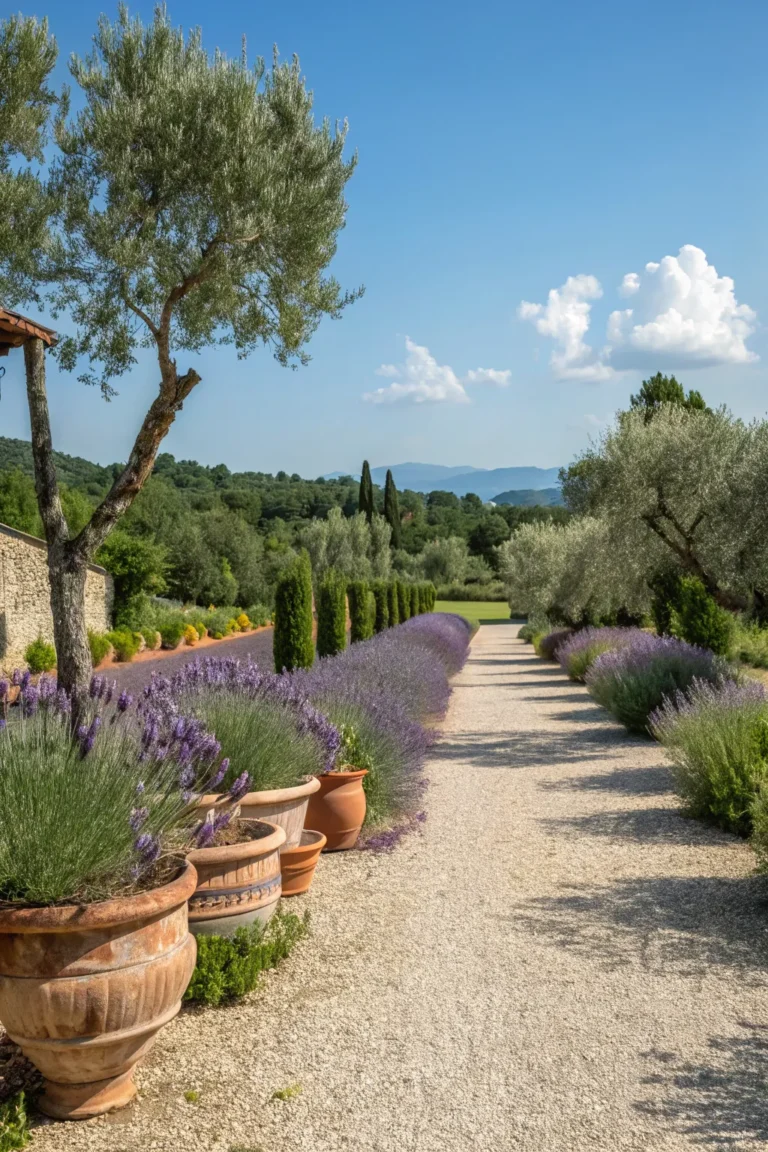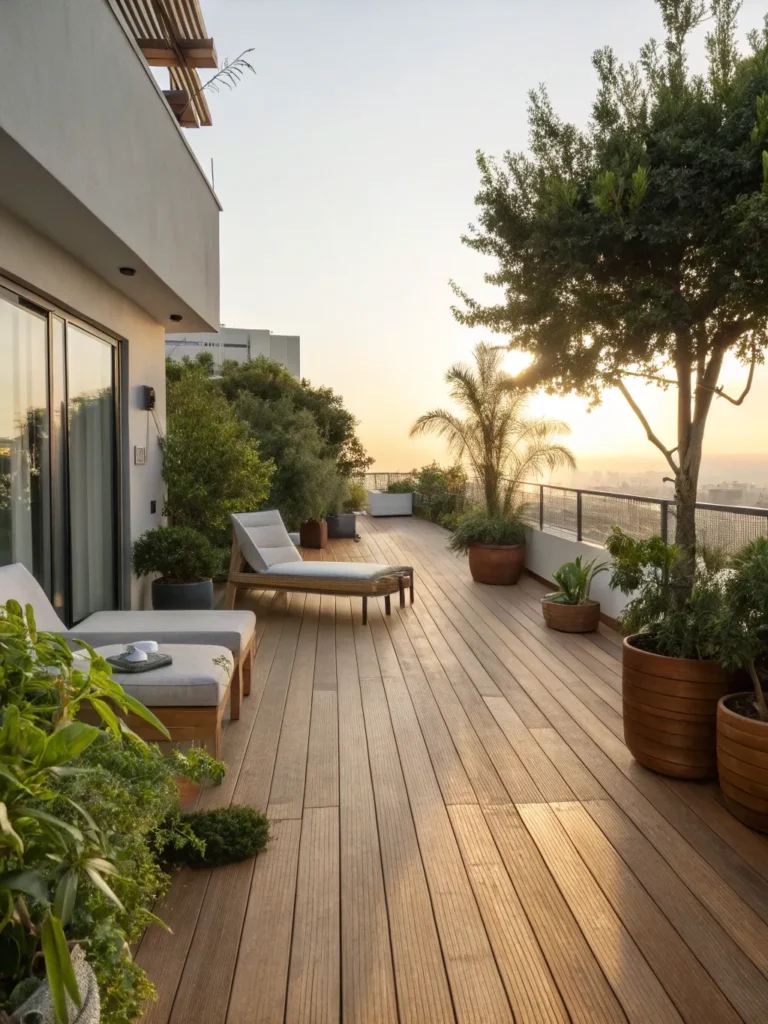25 Best Flowers to Plant in Fall for Stunning Spring Blooms
Looking to refresh your garden as the seasons shift? Choosing the right flowers to plant in fall can keep your outdoor space colorful long after summer has faded. Fall planting not only brings vibrant blooms now but also sets the stage for stunning displays in spring.
From hardy perennials to cheerful bulbs, autumn offers endless possibilities. Whether you’re aiming for rich golden tones, soft pastels, or striking purples, there’s a flower to suit every style. With proper planning, your garden can stay alive with color, fragrance, and pollinator-friendly blossoms well into the cooler months.
In this article, we'll cover
- 25 Best Flowers to Plant in Fall for a Vibrant Spring Garden
- 1. Crocus
- 2. Tulips
- 3. Hyacinth
- 4. Daffodils
- 5. Alliums
- 6. Peonies
- 7. Lilies
- 8. Bluebells
- 9. Grape Hyacinth
- 10. Lily of the Valley
- 11. Snowdrops
- 12. Anemones
- 13. Fritillaria
- 14. Mums
- 15. Nasturtium
- 16. Pansies
- 17. Goldenrod
- 18. Asters
- 19. Hydrangea
- 20. Viburnum
- 21. Lilacs
- 22. Marigolds
- 23. Coneflowers
- 24. Zinnias
- 25. Black-Eyed Susans
- Where to Buy Bulbs?
- When Should I Plant Bulbs?
- How Do I Find My Region’s First and Last Frost Date?
- Basics of Autumn Bulb Planting
- Short-Term Bulb Storage
- Planting
- Conclusion
25 Best Flowers to Plant in Fall for a Vibrant Spring Garden
1. Crocus
One of the earliest flowers to bloom, crocuses bring cheerful pops of color when most of the garden is still resting. Their cup-shaped blossoms appear in shades of yellow, purple, white, and orange, making them a delightful choice for beds, lawns, or even containers.
They are low-maintenance, easy to grow, and thrive best when planted in clusters of several bulbs together. Grouping them ensures a stronger visual effect, allowing the delicate flowers to stand out beautifully. For gardeners who enjoy naturalistic planting, crocuses pair wonderfully with displays like those in gardens with wild flowers, where they blend seamlessly into seasonal landscapes.
|
Plant Type: |
Crocus |
|
How to Grow: |
Spring blooming bulbs, some autumn blooming varieties available. Plant 6–8 weeks before first frost date. |
|
Lighting: |
Full sun to part shade |
|
Water: |
Moderate |
|
Minimum Grow Zone: |
Zone 3 |
2. Tulips
Tulips are among the most beloved spring flowers, known for their vibrant, cup-shaped blooms that come in nearly every color imaginable. Planted in autumn, they create striking displays that light up gardens after the cold months. Their versatility makes them ideal for borders, containers, or mass plantings.
They grow best in well-drained soil with plenty of sun. Mixing varieties with different bloom times ensures continuous color for weeks. Tulips also work beautifully when combined with structured features like gardens with arches, where their upright blooms enhance architectural elegance.
|
Plant Type: |
Tulips |
|
How to Grow: |
Plant in fall for spring blooms. Choose early, mid, and late-season varieties for extended displays. |
|
Lighting: |
Full sun |
|
Water: |
Full sun |
|
Minimum Grow Zone: |
Zone 3–8 |
3. Hyacinth
Known for their fragrance and dense clusters of star-shaped flowers, hyacinths are a favorite for both garden beds and containers. Their rich colors—ranging from pink and purple to blue and white—make them a stunning focal point in spring.
These bulbs prefer sunny spots with well-drained soil and should be planted in groups for maximum impact. Because of their strong perfume, they are especially popular near seating areas and pathways. Pairing hyacinths with cozy outdoor nooks like those in garden seating ideas can enhance both the look and the sensory experience.
|
Plant Type: |
Hyacinth |
|
How to Grow: |
Plant bulbs in fall, 4–6 inches deep. Use gloves, as bulbs may cause skin irritation. |
|
Lighting: |
Full sun to part shade |
|
Water: |
Moderate; ensure good drainage |
|
Minimum Grow Zone: |
Zone 4–8 |
4. Daffodils
Bright and cheerful, daffodils are a classic symbol of spring. Their trumpet-shaped flowers in shades of yellow, white, and orange are easy to grow and reliable year after year. Once planted, they naturalize well, returning each season with minimal care.
They thrive in groups, creating carpets of golden blooms that brighten up borders and lawns. Daffodils also transition beautifully from late summer plantings, complementing seasonal displays like those featured in August flowers. They’re also deer-resistant, making them a practical option for many gardens.
|
Plant Type: |
Daffodils |
|
How to Grow: |
Plant bulbs in fall, 6 inches deep. Naturalize well over time. |
|
Lighting: |
Full sun to part shade |
|
Water: |
Moderate; water after planting and in spring |
|
Minimum Grow Zone: |
Zone 3–9 |
5. Alliums
Alliums bring architectural elegance to gardens with their globe-like clusters of purple, white, or pink flowers perched on tall stems. They bloom in late spring to early summer, adding height and structure to flower beds.
These bulbs are not only striking but also low-maintenance and pest-resistant. They’re best planted in groups to form dramatic displays, making them a perfect complement to garden focal points. For inspiration, check out gardens with alliums, where their sculptural forms create a bold and unforgettable statement.
|
Plant Type: |
Alliums |
|
How to Grow: |
Plant bulbs in fall, 4–6 inches deep. Space 6–8 inches apart for best effect. |
|
Lighting: |
Full sun |
|
Water: |
Low to moderate; drought-tolerant once established |
|
Minimum Grow Zone: |
Zone 4–9 |
6. Peonies
Peonies are timeless perennials admired for their large, ruffled blooms in shades of pink, red, white, and coral. Their flowers add elegance and fragrance, making them a favorite for cut arrangements as well as garden borders.
Peonies thrive in sunny spots and reward patience with decades of reliable blooms once established. Their lush foliage also provides a lovely backdrop throughout the season. Planted near inviting corners like those in garden hammock ideas, peonies create a restful, romantic vibe that elevates any outdoor retreat.
|
Plant Type: |
Peonies |
|
How to Grow: |
Plant roots in fall, 2 inches below soil. They need time to establish and may take 2–3 years to flower fully. |
|
Lighting: |
Full sun |
|
Water: |
Moderate; avoid waterlogging |
|
Minimum Grow Zone: |
Zone 3–8 |
7. Lilies
With their elegant trumpet-shaped flowers and wide color range, lilies bring dramatic vertical accents to gardens. They are especially popular in mixed borders where their bold forms contrast beautifully with softer blooms.
Lilies prefer well-drained soil and can bloom at different times depending on the variety, ensuring season-long beauty. Their striking appearance makes them perfect companions for reflective features like garden mirror ideas, where their vivid blooms double in visual impact.
|
Plant Type: |
Lilies |
|
How to Grow: |
Plant bulbs in fall, 6–8 inches deep. Mulch to protect from winter frost. |
|
Lighting: |
Full sun to part shade |
|
Water: |
Moderate; keep soil evenly moist |
|
Minimum Grow Zone: |
Zone 4–9 |
8. Bluebells
Bluebells form enchanting carpets of nodding, bell-shaped flowers in shades of blue and violet. They are ideal for naturalizing in woodlands, shady borders, or under trees, where they create a magical spring atmosphere.
These bulbs spread over time, filling spaces with vibrant color. Their charm is best appreciated in clusters, where they bring a soft, dreamy effect. Bluebells also enhance shaded corners like those in small garden courtyard ideas, adding a splash of seasonal brightness to hidden spots.
|
Plant Type: |
Bluebells |
|
How to Grow: |
Plant bulbs in fall, 3–4 inches deep. Allow to naturalize in shady areas. |
|
Lighting: |
Part shade to full shade |
|
Water: |
Low to moderate; water during dry spells |
|
Minimum Grow Zone: |
Zone 3–8 |
9. Grape Hyacinth
Compact yet striking, grape hyacinths produce clusters of tiny, grape-like flowers in vivid purple or blue hues. Their early blooms make them a cheerful addition to borders, containers, and even lawns.
They spread easily, naturalizing into colorful carpets that brighten any space. Their compact size makes them perfect companions for decorative features such as garden water features, where their blooms add a lively touch around fountains and ponds.
|
Plant Type: |
Grape Hyacinth |
|
How to Grow: |
Plant bulbs in fall, 3 inches deep. Allow to multiply naturally. |
|
Lighting: |
Full sun to part shade |
|
Water: |
Moderate; well-drained soil is essential |
|
Minimum Grow Zone: |
Zone 4–9 |
10. Lily of the Valley
Lily of the Valley is a delicate woodland plant cherished for its small, bell-shaped white flowers and sweet fragrance. It spreads quickly, forming lush ground cover in shady areas.
Though petite, its charm lies in its simplicity and scent, making it a delightful choice for shaded paths or garden edges. Its ability to thrive in less sunny areas pairs beautifully with serene spots like garden nook ideas, where its fragrance enhances the sense of calm.
|
Plant Type: |
Lily of the Valley |
|
How to Grow: |
Plant pips (root structures) in fall. Allow to spread naturally as ground cover. |
|
Lighting: |
Part shade to full shade |
|
Water: |
Moderate to moist; prefers consistently damp soil |
|
Minimum Grow Zone: |
Zone 2–8 |
11. Snowdrops
Snowdrops are among the earliest flowers to bloom, often peeking through the last patches of snow. Their dainty white, bell-shaped blossoms bring hope and freshness to the late-winter and early-spring garden.
They thrive in well-drained soil and prefer cooler climates, naturalizing beautifully over time. Snowdrops work well when planted in drifts under trees or along shaded borders. Their charm is even more striking in seasonal displays, similar to those seen in gardens with lavender, where delicate blooms create a soft, calming effect.
|
Plant Type: |
Snowdrops |
|
How to Grow: |
Plant bulbs in fall, 2–3 inches deep. Naturalize easily in cool climates. |
|
Lighting: |
Part shade to full shade |
|
Water: |
Moderate; avoid soggy soil |
|
Minimum Grow Zone: |
Zone 3–7 |
12. Anemones
Anemones bring a cheerful splash of color with their daisy-like blooms in shades of red, pink, purple, and white. These resilient flowers are loved for their versatility, thriving in both borders and containers.
They’re best planted in groups for a bold display and often bloom in early to mid-spring. Anemones are excellent companions for focal points like garden borders with sleepers, where their vibrant hues stand out against structured edges.
|
Plant Type: |
Anemones |
|
How to Grow: |
Plant tubers in fall, 2–3 inches deep. Soak before planting to encourage sprouting. |
|
Lighting: |
Full sun to part shade |
|
Water: |
Moderate; water regularly but avoid overwatering |
|
Minimum Grow Zone: |
Zone 4–8 |
13. Fritillaria
Fritillaria are exotic-looking flowers known for their nodding, bell-shaped blooms, often patterned with striking checkerboard markings. They add drama and uniqueness to spring gardens.
These bulbs prefer rich, well-drained soil and should be planted in groups for maximum visual effect. Their unusual beauty pairs perfectly with serene garden layouts like small garden courtyard ideas, where their elegant forms create eye-catching accents.
|
Plant Type: |
Fritillaria |
|
How to Grow: |
Plant bulbs in fall, 5–6 inches deep. Ensure well-drained, fertile soil. |
|
Lighting: |
Full sun to part shade |
|
Water: |
Moderate; keep evenly moist |
|
Minimum Grow Zone: |
Zone 4–8 |
14. Mums
Chrysanthemums, or mums, are iconic fall flowers, famous for their vibrant colors including gold, bronze, red, and purple. They bring instant brightness to gardens when many other plants have faded.
They thrive in containers, borders, and as seasonal displays. With regular deadheading, mums continue to bloom for weeks, making them a favorite for extending seasonal color. Their bold tones complement cozy spaces like patio seating ideas, where they provide a warm, inviting atmosphere.
|
Plant Type: |
Mums (Chrysanthemums) |
|
How to Grow: |
Plant in early fall for best results. Pinch back tips for bushier growth. |
|
Lighting: |
Full sun |
|
Water: |
Moderate to high; keep soil consistently moist |
|
Minimum Grow Zone: |
Zone 5–9 |
15. Nasturtium
Nasturtiums are fast-growing annuals valued for their trailing habit, edible leaves, and bright blooms in shades of red, orange, and yellow. They add cheerfulness to both garden beds and containers.
These easy-care plants thrive in poorer soils, making them a great option for less demanding spots. Their cascading form also looks lovely around casual and colorful landscapes like gardens with azaleas, where they add extra bursts of brightness.
|
Plant Type: |
Nasturtium |
|
How to Grow: |
Direct sow seeds in fall where winters are mild. Quick to sprout and flower. |
|
Lighting: |
Full sun |
|
Water: |
Low to moderate; avoid overly rich soil |
|
Minimum Grow Zone: |
Zone 9–11 |
16. Pansies
Pansies are cheerful, cold-hardy flowers that thrive in cooler months. With their wide variety of colors and distinctive “faces,” they add instant charm to garden beds, borders, and containers.
They bloom continuously through fall and early spring if regularly deadheaded. Their resilience makes them perfect for brightening up entryways or patios when other flowers are fading. Pansies are also edible, often used as decorative garnishes in salads and desserts.
|
Plant Type: |
Pansies |
|
How to Grow: |
Plant in fall for blooms lasting through cool months. Deadhead regularly to encourage more flowers. |
|
Lighting: |
Full sun to part shade |
|
Water: |
Moderate; keep soil evenly moist |
|
Minimum Grow Zone: |
Zone 6–10 (annual elsewhere) |
17. Goldenrod
Goldenrod produces tall spikes of golden-yellow flowers that light up gardens from late summer into fall. Their sunny blooms attract pollinators, making them a valuable addition to wildlife-friendly landscapes.
Despite the myth, goldenrod does not cause allergies; it actually blooms at the same time as ragweed, which is the real culprit. Easy to grow, it adapts to many soils and adds warmth to garden backdrops or meadow-style planting schemes.
|
Plant Type: |
Goldenrod |
|
How to Grow: |
Plant seeds or divisions in fall. Low-maintenance and spreads easily. |
|
Lighting: |
Full sun |
|
Water: |
Low to moderate; drought-tolerant once established |
|
Minimum Grow Zone: |
Zone 3–9 |
18. Asters
Asters bring daisy-like flowers in shades of purple, blue, pink, and white, offering a final burst of color before winter sets in. They are popular for extending the garden season.
Blooming in late summer through fall, asters attract butterflies and bees, making them pollinator-friendly plants. They work well in borders and naturalized plantings, blending beautifully with ornamental grasses and late-blooming perennials.
|
Plant Type: |
Asters |
|
How to Grow: |
Plant in fall or early spring. Divide clumps every 2–3 years to maintain vigor. |
|
Lighting: |
Full sun |
|
Water: |
Moderate |
|
Minimum Grow Zone: |
Moderate; prefers moist, well-drained soil |
19. Hydrangea
Hydrangeas are beloved shrubs with lush, ball-shaped flower clusters in shades of pink, blue, purple, and white. Their dramatic blooms can last from summer into fall, making them versatile for garden displays.
They thrive in rich soil and can adapt their color based on soil pH, turning blue in acidic soil and pink in alkaline. Hydrangeas are excellent for borders, hedges, or as striking focal points in garden beds.
|
Plant Type: |
Hydrangea |
|
How to Grow: |
Plant in fall or spring. Amend soil to adjust flower colors if desired. |
|
Lighting: |
Part sun to part shade |
|
Water: |
Moderate to high; keep soil moist |
|
Minimum Grow Zone: |
Zone 3–9 (varies by species) |
20. Viburnum
Viburnum shrubs provide clusters of white or pink flowers in spring, followed by vibrant berries and colorful fall foliage. Their multi-season appeal makes them valuable in landscape design.
These hardy shrubs are low-maintenance and can be used for hedges, borders, or natural screens. In fall, many varieties display striking red or purple leaves, offering additional seasonal interest.
|
Plant Type: |
Viburnum |
|
How to Grow: |
Plant in fall or spring. Requires little care once established. |
|
Lighting: |
Full sun to part shade |
|
Water: |
Moderate; adaptable to various soils |
|
Minimum Grow Zone: |
Zone 3–9 |
21. Lilacs
Lilacs are cherished for their clusters of fragrant, purple or white flowers that bloom in spring. They bring a nostalgic charm to gardens and are loved by both gardeners and pollinators.
These hardy shrubs can live for decades, rewarding with consistent blooms each year. Lilacs also make excellent cut flowers, filling indoor spaces with their sweet scent. They thrive in cooler climates and benefit from regular pruning to maintain their shape.
|
Plant Type: |
Lilacs |
|
How to Grow: |
Plant shrubs in fall or spring. Prune after flowering to encourage new growth. |
|
Lighting: |
Full sun |
|
Water: |
Moderate; prefers well-drained soil |
|
Minimum Grow Zone: |
Zone 3–7 |
22. Marigolds
Marigolds are cheerful annuals with bright yellow, orange, and red blooms. They are widely planted for their ability to repel pests and attract pollinators, making them both beautiful and practical.
These hardy flowers thrive in containers, borders, and vegetable gardens. Their low maintenance and long-lasting blooms make them ideal for adding color throughout the season. They are especially popular in cultural festivals and symbolic plantings.
|
Plant Type: |
Marigolds |
|
How to Grow: |
Direct sow seeds or plant starts in fall in mild climates. Deadhead regularly for more blooms. |
|
Lighting: |
Full sun |
|
Water: |
Low to moderate; drought-tolerant once established |
|
Minimum Grow Zone: |
Zone 2–11 (annual in most zones) |
23. Coneflowers
Coneflowers, also known as echinacea, are hardy perennials valued for their daisy-like blooms and long flowering season. Their purple, pink, or white petals surround a spiky central cone that attracts butterflies and bees.
These low-maintenance plants are excellent for pollinator gardens and naturalized areas. Coneflowers are also known for their herbal uses, often featured in teas and remedies. They add bold structure and late-season color to borders and beds.
|
Plant Type: |
Coneflowers (Echinacea) |
|
How to Grow: |
Plant in fall or spring. Divide clumps every few years for better growth. |
|
Lighting: |
Full sun |
|
Water: |
Low to moderate; drought-tolerant once established |
|
Minimum Grow Zone: |
Zone 3–9 |
24. Zinnias
Zinnias are vibrant annuals that bloom in an array of colors, including red, pink, orange, yellow, and purple. They are beloved for their continuous flowers and ability to brighten up any garden space.
Easy to grow and fast-blooming, zinnias thrive in containers, borders, or cutting gardens. They’re also pollinator magnets, drawing butterflies and bees throughout the season. With their variety of shapes and sizes, they can complement any garden design.
|
Plant Type: |
Zinnias |
|
How to Grow: |
Direct sow seeds in fall in warm climates or start indoors. Thrive in rich, well-drained soil. |
|
Lighting: |
Full sun |
|
Water: |
Moderate; water at soil level to prevent mildew |
|
Minimum Grow Zone: |
Zone 3–10 (annual) |
25. Black-Eyed Susans
Black-Eyed Susans are classic wildflowers with golden-yellow petals and dark brown centers. Their bright, cheerful appearance makes them a staple in meadows, borders, and cottage-style gardens.
They are hardy, easy to grow, and attract pollinators like butterflies and bees. Blooming from mid-summer into fall, these perennials provide long-lasting color and natural charm. Once established, they spread easily and return year after year.
|
Plant Type: |
Black-Eyed Susans (Rudbeckia) |
|
How to Grow: |
Plant seeds or divisions in fall or spring. Low-maintenance and naturalize quickly. |
|
Lighting: |
Full sun |
|
Water: |
Low to moderate; drought-tolerant once established |
|
Minimum Grow Zone: |
Zone 3–9 |
Where to Buy Bulbs?
Choosing the right source for bulbs is just as important as planting them correctly. Here are some reliable options:
- Local Garden Centers – Offer regionally suitable varieties and allow you to inspect bulbs before buying.
- Online Retailers – Provide access to a wider range of species and rare cultivars that may not be locally available.
- Specialty Nurseries – Focus on high-quality or heirloom bulbs, often grown organically.
- Seasonal Markets or Fairs – Great for affordable, bulk purchases, especially if you’re naturalizing large areas.
- Trusted Neighbors & Gardening Clubs – Often exchange or sell divisions, ensuring hardy bulbs adapted to your local climate.
When Should I Plant Bulbs?
Timing is key to ensure bulbs establish strong roots before winter. General guidelines include:
- 6–8 Weeks Before First Frost – Most spring-blooming bulbs should be planted in early to mid-fall.
- Cool Soil Temperatures (40–50°F / 4–10°C) – Plant once the soil has cooled but isn’t frozen, giving bulbs time to settle.
- Early Fall for Warmer Zones – In regions with mild winters, plant bulbs earlier to allow longer rooting periods.
- Late Fall for Colder Zones – In northern climates, bulbs can be planted as late as early November, as long as the ground isn’t frozen.
- Check Specific Varieties – Some, like daffodils and alliums, tolerate slightly later planting compared to tulips and crocuses.
How Do I Find My Region’s First and Last Frost Date?
Knowing your frost dates helps determine the best planting window for bulbs. Here’s how to find them:
- Use USDA Hardiness Zone Maps – These maps give average frost dates based on your region’s climate zone.
- Local Cooperative Extension Services – Many universities provide frost date calculators and guides specific to your area.
- Weather Websites & Apps – Reliable platforms often list historical frost data and future predictions.
- Gardening Almanacs – Traditional farmer’s almanacs remain a trusted resource for frost timing.
- Observe Local Patterns – Speak with experienced gardeners in your neighborhood, as microclimates can vary even within the same town.
Basics of Autumn Bulb Planting
Planting bulbs correctly ensures healthy growth and vibrant blooms in spring. Follow these fundamentals:
Short-Term Bulb Storage
- Cool & Dry Location – Store bulbs in a paper bag or mesh sack in a well-ventilated area.
- Avoid Plastic Bags – They trap moisture and may cause rot or mold.
- Check Regularly – Inspect for soft spots or mold before planting.
- Do Not Refrigerate with Fruit – Apples and pears release ethylene gas, which damages bulbs.
Planting
- Depth Matters – Plant bulbs about 2–3 times as deep as their height.
- Pointed End Up – Position bulbs with the tip facing upward.
- Well-Drained Soil – Prevents bulbs from rotting over winter.
- Group Planting – Place 3–9 bulbs together in clusters for a stronger visual effect.
- Water After Planting – Helps settle the soil and kickstart root development.
Conclusion
Planting in autumn is one of the best ways to ensure a colorful and thriving garden when spring arrives. By choosing from these flowers to plant in fall, you not only extend seasonal beauty but also give your bulbs and perennials the chance to establish strong roots before winter.
Whether you prefer cheerful daffodils, fragrant hyacinths, or bold alliums, fall planting brings lasting rewards. With thoughtful preparation, proper care, and the right flower selection, your garden will burst into life with vibrant colors and fragrances, rewarding you with a stunning display year after year.
Discover more from Leafy Haven Home | Stylish Garden Ideas & Cozy Decor Tips
Subscribe to get the latest posts sent to your email.

